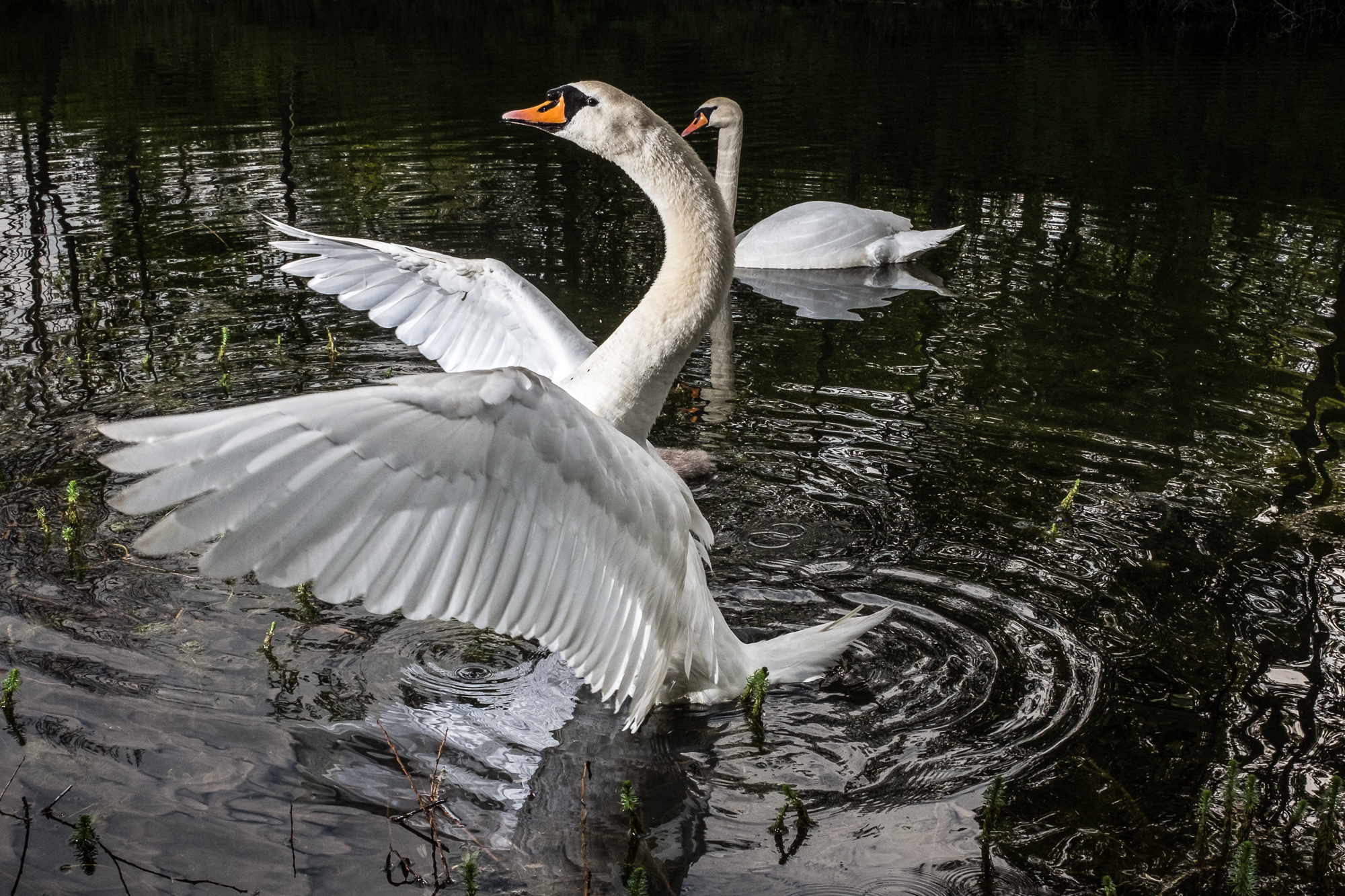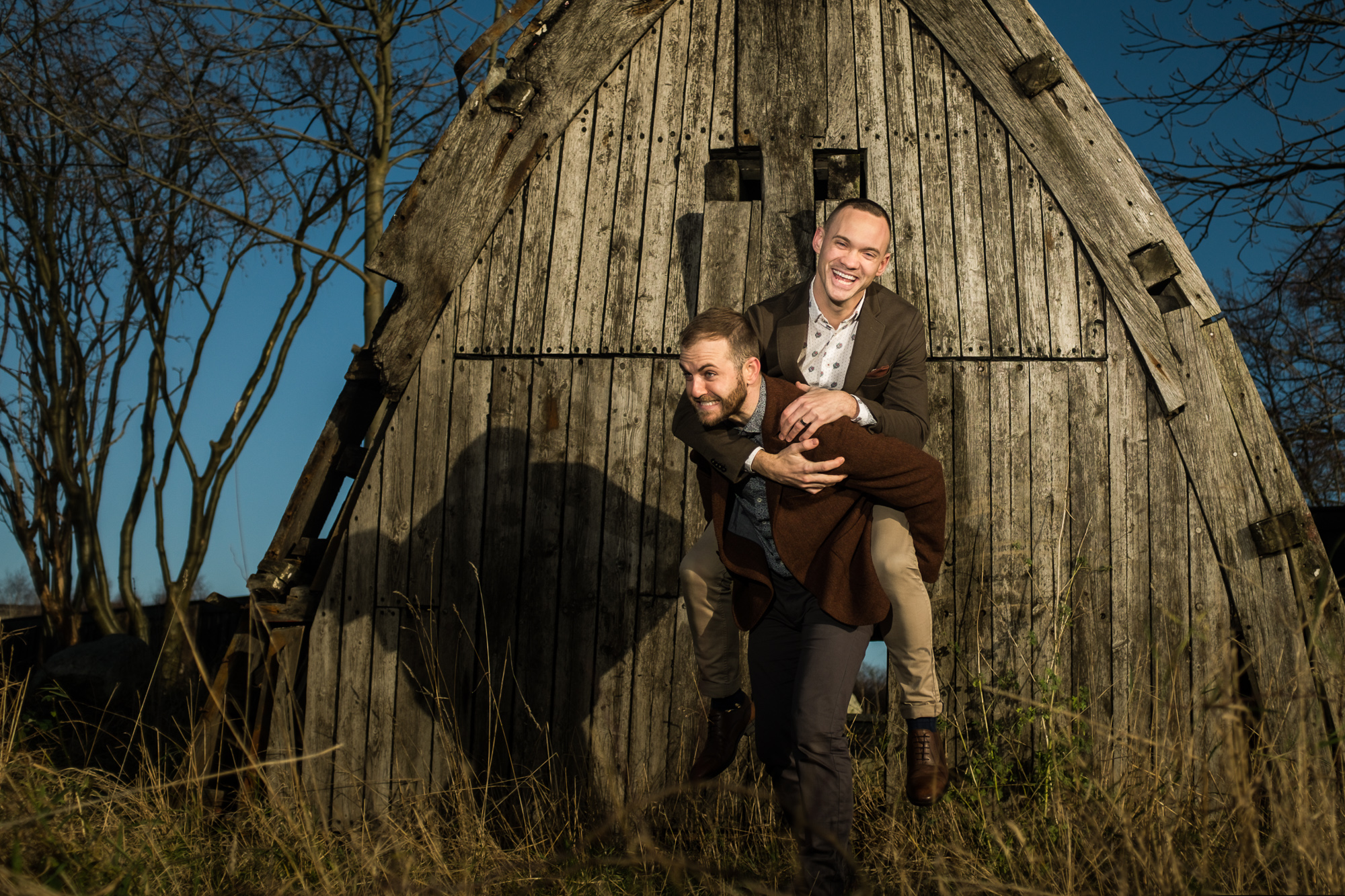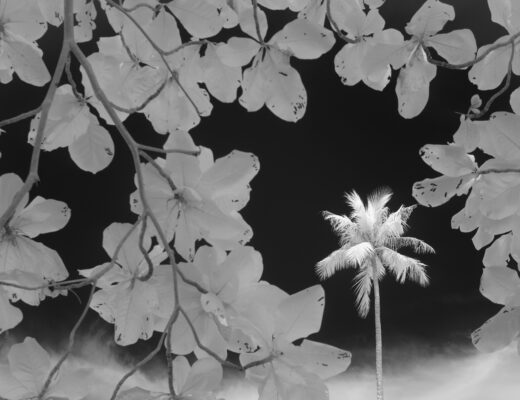“And on the third day, God created the Leaf Shutter”. Ok, maybe not quite so, but for many a photographer who likes blending flash with natural light, the leaf shutter, with about 125 years of work on it’s CV, holds a place of it’s own. The much more wide-spread focal plane shutter (you’ll find it in just about every DSLR ever made) does indeed have it’s advantages, but non of these relate to flash photography. And if you look towards the “no-compromises” end of the camera industry (read: Medium Format), you will much more frequently find leaf shutters. The brand new Hasselblad X1D (or was it 1DX or D1X? 😉 ) comes to mind. This is the worlds first mirrorless MF camera system, and in every lens there is a leaf shutter. In every lens? Yup, leaf shutters are ideally placed in the optical center of a lens, and thus you need a shutter in every lens, opposed to focal plane shutters that are placed in the camera body, right in front of the sensor/film.
(Fuji is rumoured to be working on a MF system, and my bet (and my hope) is that they too will utilise leaf shutters.)
“Ok, we get it, leaf shutters are the mutts nuts, but please – why?”
If you don´t shoot flash, leaf shutters make no difference worth mentioning. If you only shoot flash in a studio with no ambient light, leaf shutters do not matter (except if you shoot action and have flashes with longish flash durations). But: If you shoot flash mixed with ambient light, with leaf shutters, you will have a situation that is quite different than when using focal plane shutters. I will skip the rather technical explanation of how the two shutter types work (please google it – knowledge is good), but the crucial point is, that while focal plane shutters can not sync with flash at more than (typically) 1/180-1/250th of a second, leaf shutters do not have a maximum sync speed per se.
“Now what significance does this have for me?”
Let’s look at a real-world situation:
You are on a beach in rather bright light, and you are going to shoot a group af five people. You want to fill in the shadows with your speedlight, and perhaps take the ambient light a stop down, to get a pleasantly saturated blue sky.
You are at your maximum sync speed (with your focal plane shutter), say 1/200th, and your speedlight is at full power. Shadows are nicely filled, but you would now like to take ambient light down a bit. You can not go faster on the shutter, so you can only close your aperture or lower the iso, but these two will only lower the whole exposure, and not change the relationship between ambient and flash. Your only real option is to increase your flash power, but unless you have one more flash in your bag, you are screwed. (In some situations, you can move your flash closer to the subject, and thus get more power, but remember, this was a group shot.) IF you had one more flash, you could add that and close your aperture one stop. Then you would have lowered ambient light one stop, while keeping the same amount of flash. If you wanted to go two stops down on ambient, you would have to double your flashes, so you would now need four of them.
Now let us do the same with a leaf shutter: You are at 1/200th and flash at full power. To take ambient light down one stop, you double shutter speed to 1/400th. To take ambient light down two stops, you double again to 1/800th. It is that simple. See the difference? (There is a catch to this wonderful simplicity: You have to know about the flash durations of your flashes. The above example is only true, if the flash has a full power duration shorter than 1/800th of a second. I will get back to this later.)
And there is more: again you are outdoors in daylight, shooting (with your focal plane shutter) in a mix of ambient and flash, but this time you are shooting action. Say, you are shooting a snowboarder making a backflip off a kicker. The sun lights the snowboarder from the side, and you are blasting her with your flash. Everything seems to be looking cool, but when you are at the computer editing the next cover of “Snowboarder”, you see, that there is an unpleasant blur to the parts that are mostly lit by the ambient light, because you were only shooting at 1/200th. With a leaf shutter, you would have shot her at a minimum of 1/1000th and everything would have been tack sharp.

Superstar kiteboarders, Nick Jacobsen, Kevin Langeree and Jesse Richman, being bored. X100T @1/800 with Elinchrom Ranger RX.
I use the RX when I need maximum power, and can do with less portability.
“Ok, cool, but it seems that I need a medium format camera, to get to play with leaf shutters, right?”
Well, actually there are several small compact cameras, that have leaf shutters, but alas, also quite small sensors. Except, tada, Fujifilm X100T (and its older siblings X100S and X100). The X100T was my gateway drug into Fujiland, but it’s leaf shutter is the main reason that it will still hold it’s place, no matter how many X-Pro2’s or X-T2’s I would have in my bag. And it’s leaf shutter is also why I have reasonly acquired the X100-TCL for it. And will also be the reason why I will be lusting for a future 24MP X200 (or what it may be called) or a future Fuji MF (if it has leaf shutters).
In my “normal” payed photography (headshots and portraits) I use X-T1 (and likely soon X-T2) with it’s more than excellent range of lenses. But when it comes to the more creative and fun stuff, I love to use the X100T – always with flash, and always trying to fight the ambient light. I just love the “unnatural” or sometimes surreal look that I can achieve with that setup.
“So, why not just use High-Speed-Sync?”
The various ways of achieving HSS are all based on either using the “long” tail of a flash or on making the flash give out a burst of little flashes. Essentially two ways of obtaining a long flash duration. (This will probably not make sense, if you don’t know how a focal plane (curtain) shutter works. The essence is that a focal plane shutter making an exposure of, say, 1/1000, in reality is open far longer.)
The practical difference is two-fold: First of all, you lose a lot of flash power. Secondly you lose the beautiful logic of exposure, that is inherent in the leaf shutter/flash setup.
Say, you are shooting with HSS at 1/400. Going to 1/800 will most likely cut flash power to half, while doing the same with leaf shutter would retain the exact same flash power (given that the flash duration is faster than the shutter speed).
There is actually a peculiar flash schism between HSS and leaf shutter: For HSS, the longer flash duration, the better. For leaf shutter, the shorter flash duration, the better. I am quite certain, that if leaf shutters were the norm, flash manufacturers would have waaaaay more attention to shorter flash durations.
Above: Five times world champion Aaron Hadlow shot with X100T and the four-flash setup showed on the right. This is really taking “killing ambient” to the extreme, as the sunlight is as bright as can be. The “snow” in the air is flying sand being lit by the flash, as it is blowing a good 30 knots (15 m/s). My X100T survived a whole day on the salty, sandy, windy beach, but it did need a little TLC afterwards.
Anyway, I hope I have inspired some of you to investigate the lens shutter/flash combo. In the Fuji-X-world, leaf shutters are in X-10, X-20, X-30, X100, X100S, X100T and X70.
The first thing I would urge you to do, is to get to know the duration times of your flash(es). If you are in luck, the manufaturer of your flash will have made a diagram of durations. If not, you will have to put on your lab coat and get nerdy:
- At least measure the durations for 1/1, 1/2 and 1/4 power.
- Go to a dark room with a white(ish) or grey wall.
- Set flash to 1/1 power and point it to the wall.
- Set shutter speed to something slowish like 1/100.
- Set ISO at minimum (Fuji: 200). Shoot RAW and set film simulation to most neutral setting.
- Shoot the fully lit wall. Now adjust aperture so you see only the tinyest amount of white clipping (use the histogram). This is so that you will know, it flash power were any less, you would have no clipping.
- Shoot increasingly faster shutter times, until you see that there is no clipping. At that point, you will know that flash power has dropped. Take shutter speed down one notch (1/3 stop) and make a note of that speed. This is your full power duration.
- Do the same with 1/2 power and 1/4 power.
This will give you a basic knowledge that will come in handy. There is a lot more to be said about flash durations, but this is kind of the un-scientific tip of the iceberg.
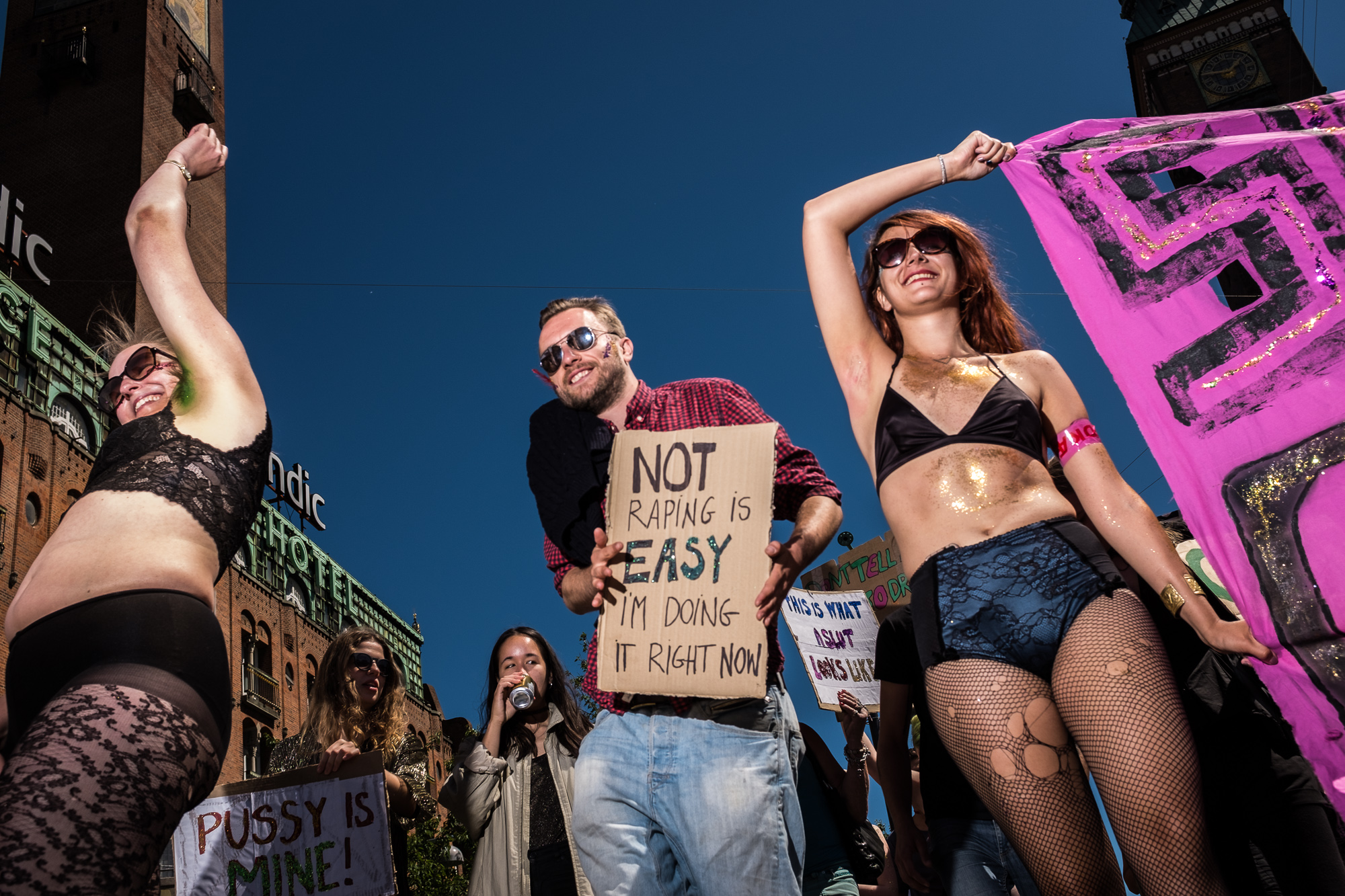
I shot this demonstration with my super simple “Bruce Gilden-setup”: X100T in right hand with cord to YN-560iv in left hand. @1/800.
A practical example of applying knowledge of flash duration: A crucial number for using my YN-560 flashes is 1/800 at 1/2 power. This is where I know I can kill the ambient best. I can get twice the power at 1/400, but then I also have twice the ambient so nothing gained, and the loss is on recharge time and battery drain. And if I go faster (with less power) the ambient to flash ratio gets worse. This is a bit shallow and incomplete an explanation, but I hope you get the gist of it.
I am sorry, if all this got a little nerdy, but sometimes there is not really a middle way to be found. If you want to improve your flash photography, you need to study a bit. The good news is, that once you get the basic concepts, the whole thing is actually very simple, with only very few parameters.
Feel free to ask me about stuff I may have missed or gone too easy on.
As a little post scriptum, I would like to tell you my wet dream: As far as my limited knowledge goes, Fuji should in theory be able to make XF lenses with leaf shutters, that could work with, at least, future versions of X-T and X-PRO bodies. So how about a little trio of XF-LS 23mm, 35mm, 56mm? *big grin*
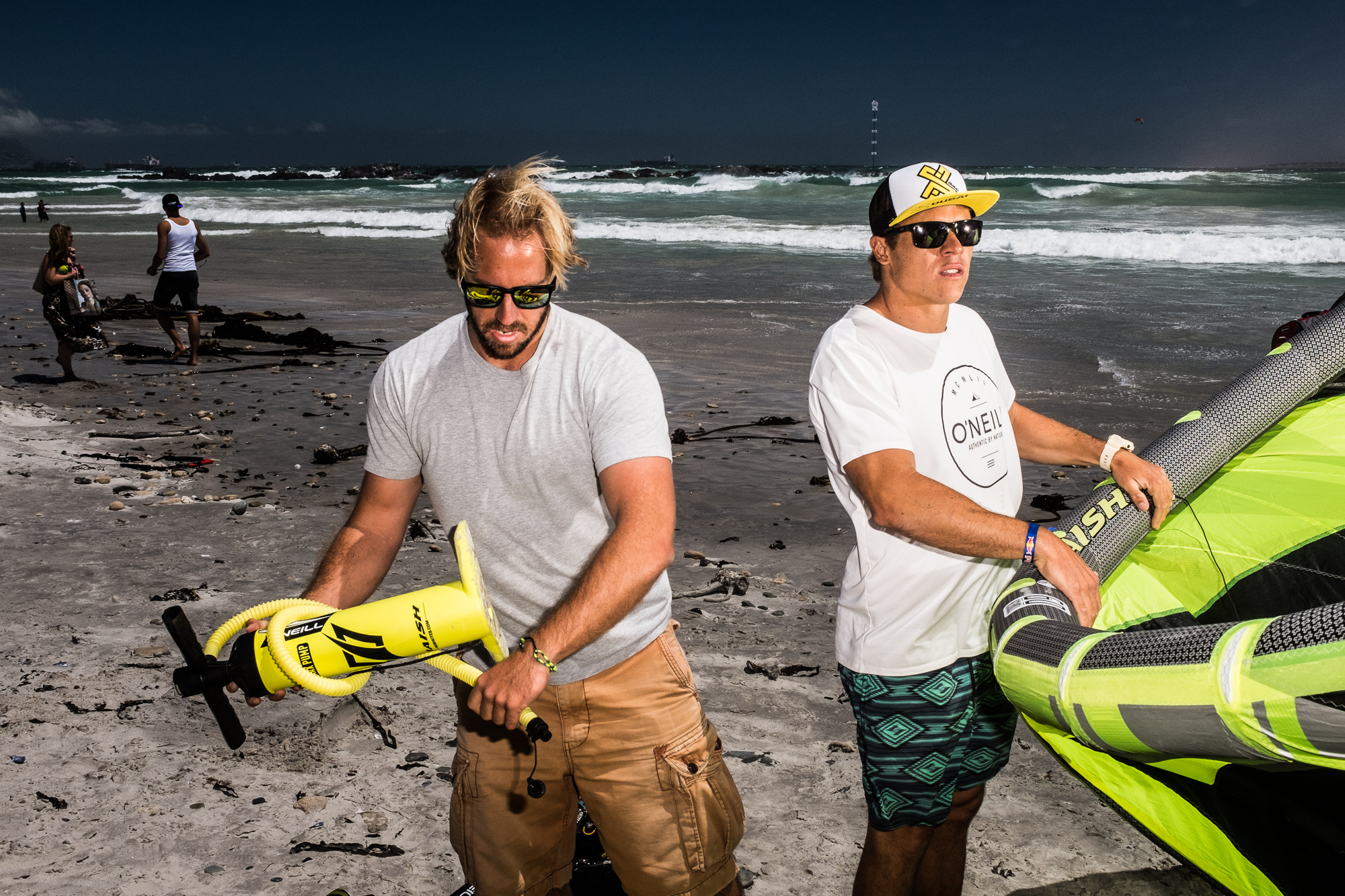
Superstar Kevin Langeree at Red Bull King Of The Air. Here my assistant is holding a Godox AD360 far right. X100T @1/640.
It is Cape Town summer sun at midday, so ambient light does not come much brighter than that.
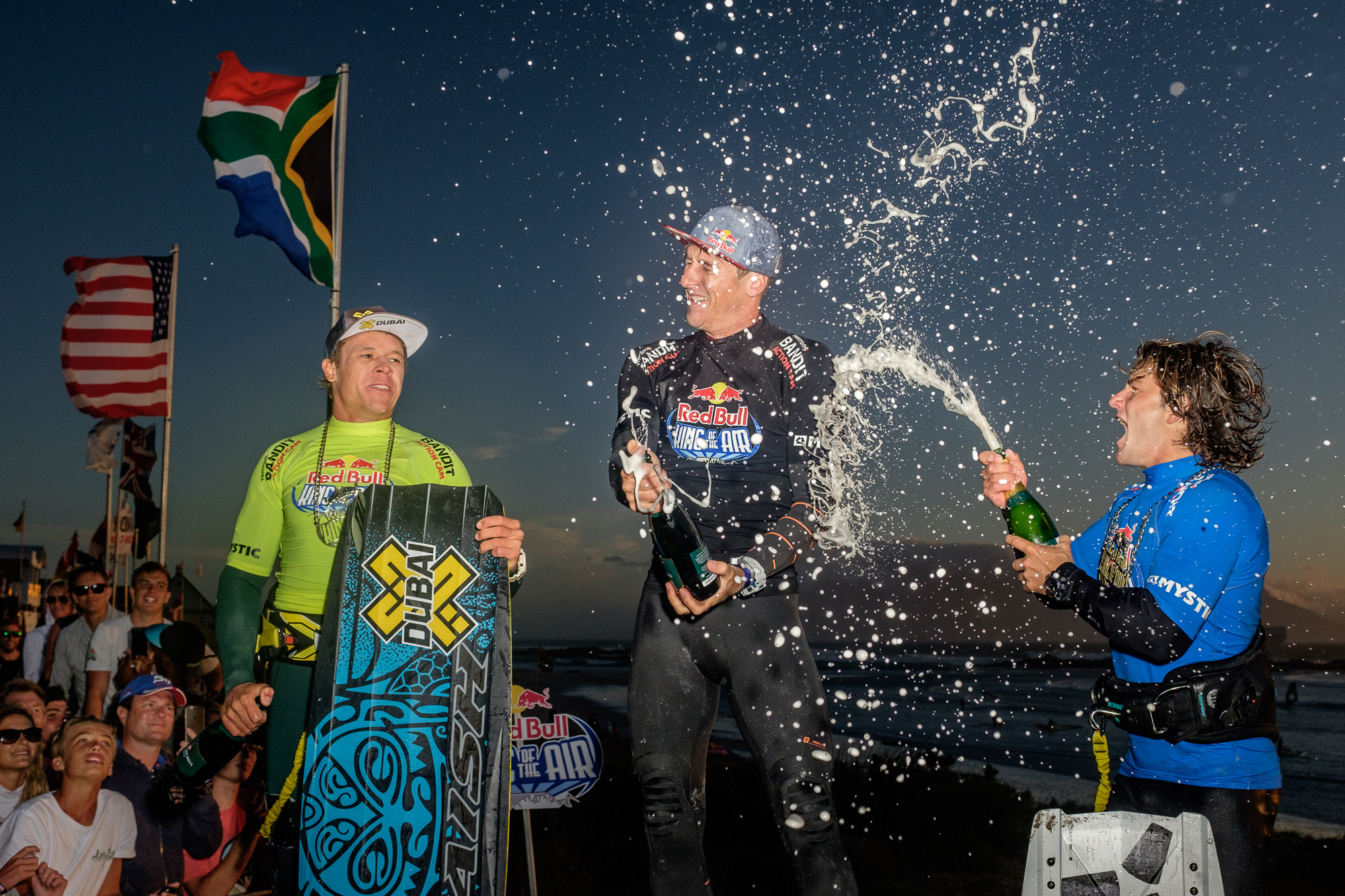
The champagne shot. Jesse Richman, Kevin Langeree and Aaron Hadlow on the podium at the 2016 Red Bull King Of The Air.
Note the clarity of the champagne, frozen mid-air by X100T @1/800 and Godox AD 360.
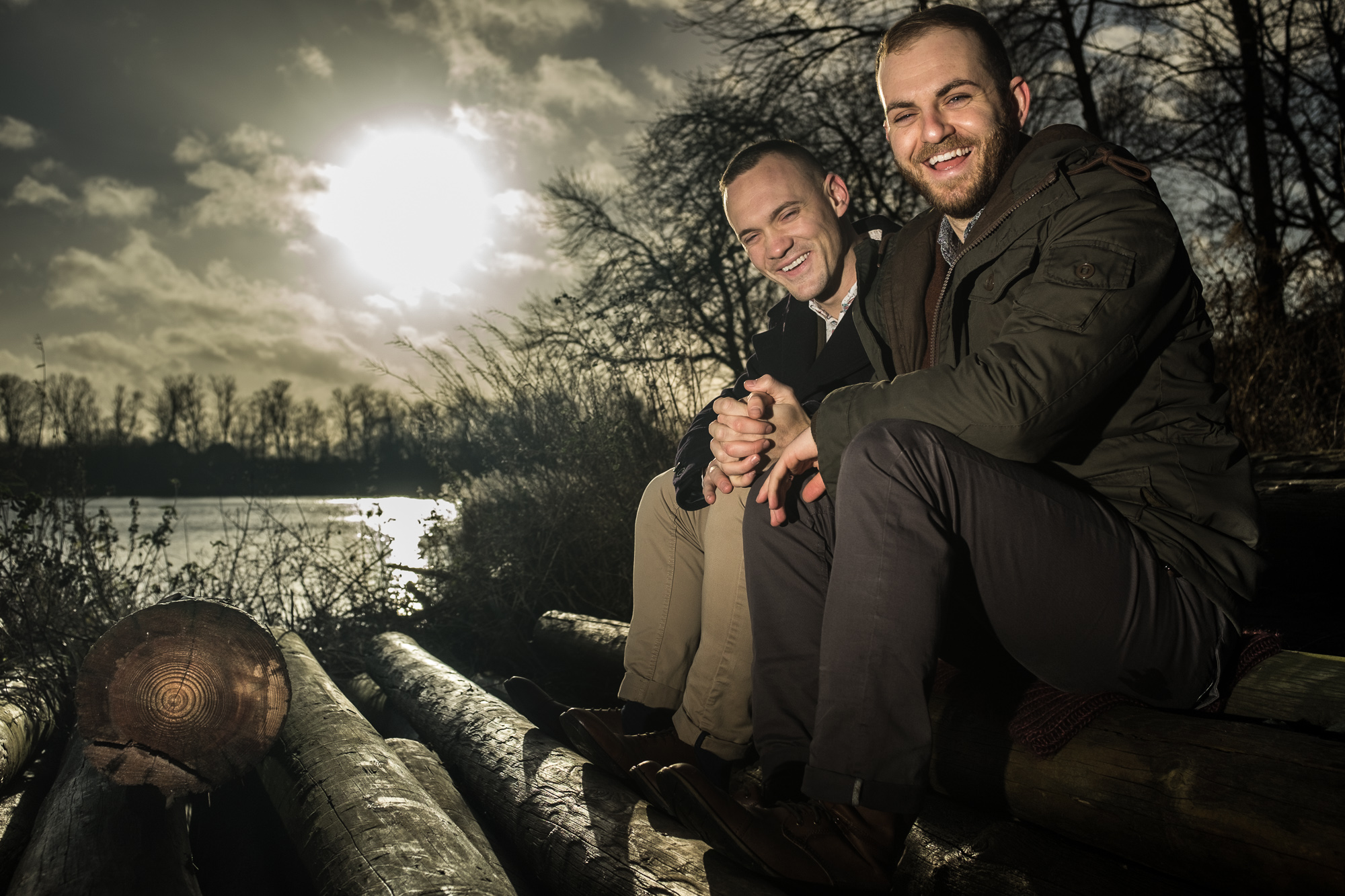
From a Copenhagen wedding session with X100T. I could shoot straight into the sun with only a YN-560iv as fill. @1/800.





